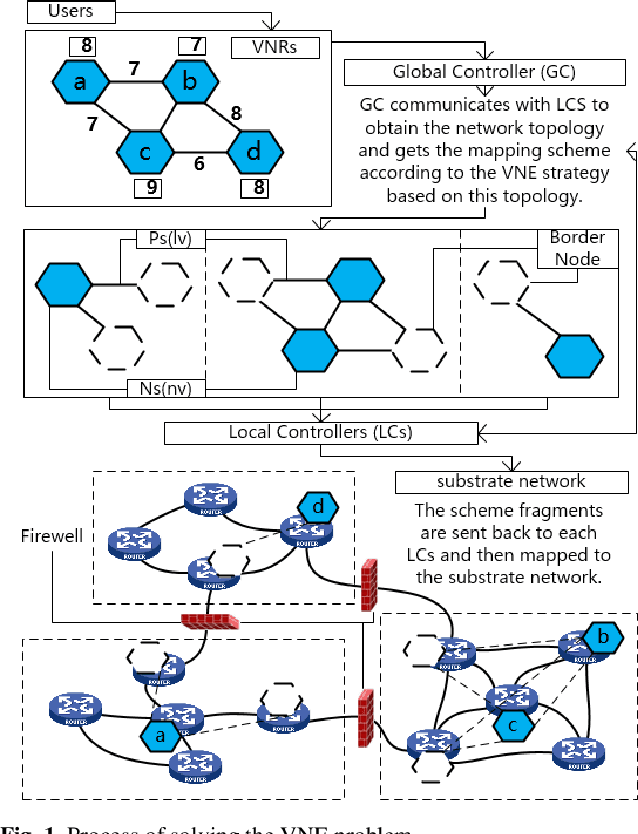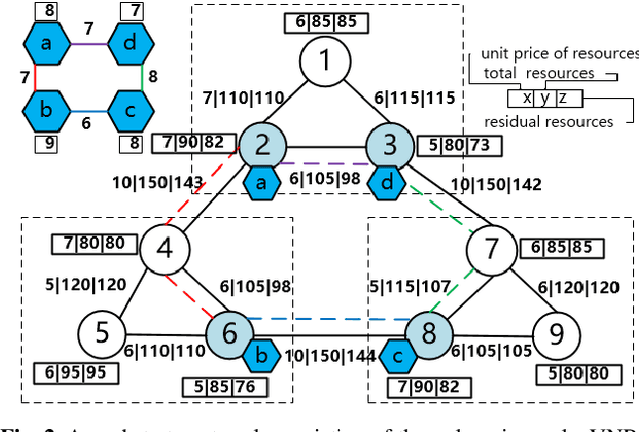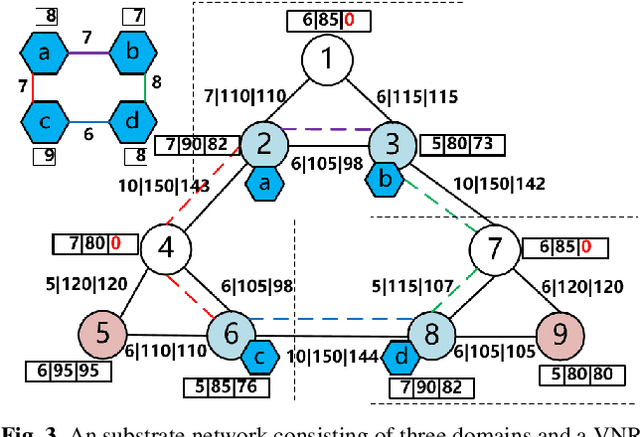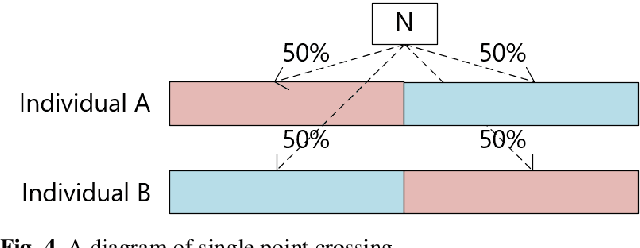Gagangeet Singh Aujla
VNE Strategy based on Chaotic Hybrid Flower Pollination Algorithm Considering Multi-criteria Decision Making
Feb 07, 2022



Abstract:With the development of science and technology and the need for Multi-Criteria Decision-Making (MCDM), the optimization problem to be solved becomes extremely complex. The theoretically accurate and optimal solutions are often difficult to obtain. Therefore, meta-heuristic algorithms based on multi-point search have received extensive attention. Aiming at these problems, the design strategy of hybrid flower pollination algorithm for Virtual Network Embedding (VNE) problem is discussed. Combining the advantages of the Genetic Algorithm (GA) and FPA, the algorithm is optimized for the characteristics of discrete optimization problems. The cross operation is used to replace the cross-pollination operation to complete the global search and replace the mutation operation with self-pollination operation to enhance the ability of local search. Moreover, a life cycle mechanism is introduced as a complement to the traditional fitness-based selection strategy to avoid premature convergence. A chaotic optimization strategy is introduced to replace the random sequence-guided crossover process to strengthen the global search capability and reduce the probability of producing invalid individuals.
A Reliable Data-transmission Mechanism using Blockchain in Edge Computing Scenarios
Feb 07, 2022



Abstract:With the advent of the Internet of things (IoT) era, more and more devices are connected to the IoT. Under the traditional cloud-thing centralized management mode, the transmission of massive data is facing many difficulties, and the reliability of data is difficult to be guaranteed. As emerging technologies, blockchain technology and edge computing (EC) technology have attracted the attention of academia in improving the reliability, privacy and invariability of IoT technology. In this paper, we combine the characteristics of the EC and blockchain to ensure the reliability of data transmission in the IoT. First of all, we propose a data transmission mechanism based on blockchain, which uses the distributed architecture of blockchain to ensure that the data is not tampered with; secondly, we introduce the three-tier structure in the architecture in turn; finally, we introduce the four working steps of the mechanism, which are similar to the working mechanism of blockchain. In the end, the simulation results show that the proposed scheme can ensure the reliability of data transmission in the Internet of things to a great extent.
IoV Scenario: Implementation of a Bandwidth Aware Algorithm in Wireless Network Communication Mode
Feb 03, 2022



Abstract:The wireless network communication mode represented by the Internet of vehicles (IoV) has been widely used. However, due to the limitations of traditional network architecture, resource scheduling in wireless network environment is still facing great challenges. This paper focuses on the allocation of bandwidth resources in the virtual network environment. This paper proposes a bandwidth aware multi domain virtual network embedding algorithm (BA-VNE). The algorithm is mainly aimed at the problem that users need a lot of bandwidth in wireless communication mode, and solves the problem of bandwidth resource allocation from the perspective of virtual network embedding (VNE). In order to improve the performance of the algorithm, we introduce particle swarm optimization (PSO) algorithm to optimize the performance of the algorithm. In order to verify the effectiveness of the algorithm, we have carried out simulation experiments from link bandwidth, mapping cost and virtual network request (VNR) acceptance rate. The final results show that the proposed algorithm is better than other representative algorithms in the above indicators.
 Add to Chrome
Add to Chrome Add to Firefox
Add to Firefox Add to Edge
Add to Edge